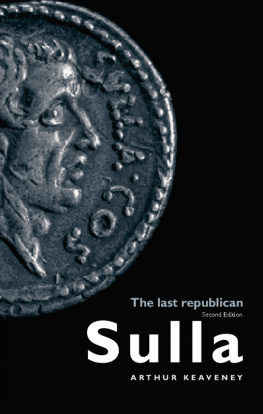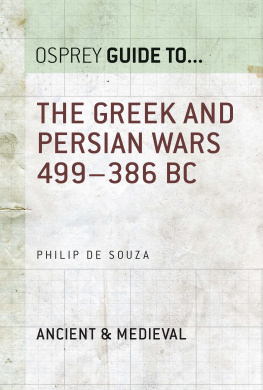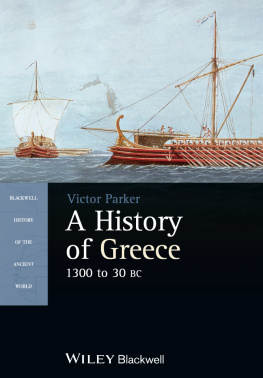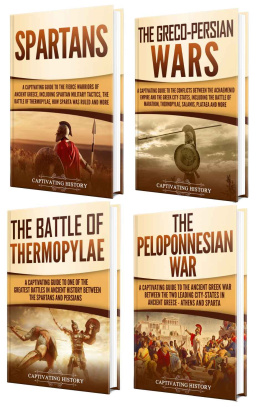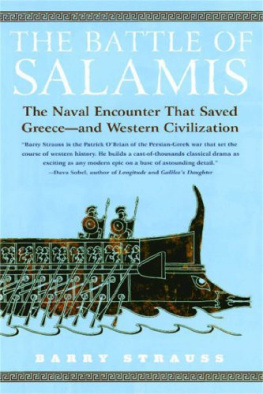First published in Great Britain in 2011 by
Pen & Sword Military
an imprint of
Pen & Sword Books Ltd
47 Church Street
Barnsley
South Yorkshire
S70 2AS
Copyright Arthur Keaveney 2011
ISBN 978-1-84884-137-6
eISBN 978-1-84468-626-1
PRC ISBN 978-1-84468-627-8
The right of Arthur Keaveney to be identified as Author of this Work has been asserted by him in accordance with the Copyright, Designs and Patents Act 1988.
A CIP catalogue record for this book is available from the British Library.
All rights reserved. No part of this book may be reproduced or transmitted in any form or by any means, electronic or mechanical including photocopying, recording or by any information storage and retrieval system, without permission from the Publisher in writing.
Typeset in 11pt Ehrhardt by Mac Style, Beverley, E. Yorkshire
Printed and bound in the UK by CPI
Pen & Sword Books Ltd incorporates the Imprints of Pen & Sword Aviation, Pen & Sword Family History, Pen & Sword Maritime, Pen & Sword Military, Pen & Sword Discovery, Wharncliffe Local History, Wharncliffe True Crime, Wharncliffe Transport, Pen & Sword Select, Pen & Sword Military Classics, Leo Cooper, The Praetorian Press, Remember When, Seaforth Publishing and Frontline Publishing
For a complete list of Pen & Sword titles please contact
PEN & SWORD BOOKS LIMITED
47 Church Street, Barnsley, South Yorkshire, S70 2AS, England
E-mail:
Website: www.pen-and-sword.co.uk
Contents
Acknowledgements
There are three people I wish to thank for help in making this book. Philip Sidnell commissioned the work and showed patience with a moderately tardy author. Although she has no palaeographical training, Kirsty Corrigan deciphered my handwriting and produced the typescript. My wife Jenny took many of the photos and also shared the burden of proof-reading. Rath D orthu go lir.
List of Plates
. Persian and Median warriors, Persepolis (Photo: Jenny Keaveney)
. The King fights a demon, Persepolis (Photo: Jenny Keaveney)
. Subjects bring tribute to the King, Persepolis (Photo: Jenny Keaveney)
. Subjects bring tribute to the King, Persepolis (Photo: Jenny Keaveney)
. The King enthroned in majesty, Persepolis (Photo: Jenny Keaveney)
. A view of Persepolis today (Photo: Jenny Keaveney)
. The Marathon battlefield (Photo: Christiane Casale)
. A modern statue of Miltiades at the Marathon battlefield (Photo: Jenny Keaveney)
. Soros: the burial mound of the Athenian dead at Marathon (Photo: Jenny Keaveney)
. The Bay of Marathon (Photo: Jenny Keaveney)
. The Hill of Kolonos, the site of the Spartans' last stand (Photo: Jenny Keaveney)
. A view of the pass of Thermopylae from the Hill of Kolonos (Photo: Jenny Keaveney)
. A modern statue of Leonidas at the pass of Thermopylae (Photo: Jenny Keaveney)
. A view of the site of the Battle of Plataea from the Akropolis of Plataea (Photo: Jenny Keaveney)
. Mount Cithaeron (Photo: Jenny Keaveney)
. The Bay of Salamis, looking northward (Photo: Jenny Keaveney)
Bust of Themistocles (Photo: Archivio Fotografico della Soprintendenza Speciale per i beni archeologici di Roma e Ostia)
. Olympias, a modern replica of a Greek trireme, arriving at Tolon (Photo: John Coates, The Trireme Trust)
List of Maps
. The Aegean, circa 500 BC
. The Battle of Marathon, 490 BC
. Xerxes' invasion route, 480 BC
. Thermopylae, 480 BC
. The Battle of Salamis, 480 BC
. The Battle of Mycale, 479 BC
. The Battle of Plataea, 479 BC

Map 1: The Aegean, circa 500 BC.
Prologue: Greeks and Persians
This book tells of the attempt by the great Achaemenid Empire of Ancient Persia to conquer the states of Greece and of its failure.
To this day Greece and Persia (Iran) exist, old civilisations, justly proud of their ancestors and their history. But that history has been a long one and much has changed in the interval of over two thousand years. We must, therefore, begin by describing how affairs stood then for both peoples.
By the time at which our narrative begins roughly the midsixth centuryBC Greece had already witnessed the flourishing and fall of two great civilisations, the Minoan and Mycenaen. These great palace cultures flourished successively between 2000 and 1200BC but had vanished by the second half of the twelfth centuryBCwhen the Mycenaens collapsed in the face of invaders from the north. There then followed a period of great obscurity for us which we, in consequence, dub the dark ages of Greece. About 850BCthese come to an end.
It is at this point that we first catch a glimpse of the lineaments of Greek statehood and culture. What we are witnessing is a conglomerate of states of varying size. Although sharing a common language and revering a common pantheon, these states never achieved political unity. That was not to come until it was imposed by the Macedonians in the fourth centuryBC. What did come about was emigration. Scarcity of land and the opportunity of trade ensured that the Greeks now spread over the Mediterranean and founded colonies. This was the second time such had occurred. About 1000BC there had been a migration, lasting some hundred or so years, to Ionia in Asia Minor. The states founded there will figure prominently in our story but first there is more to say about Greek history and habits.
Generalisations inevitably bring exceptions with them but the following broad sketch may be offered. At the end of the dark ages we find the states of Greece governed by kings but soon they mostly fade away. Their place is taken by aristocracy. These are oligarchs who claim to rule by right of birth. Their wealth comes from their great estates and they dominate warfare. In these times cavalry was the chief weapon and only the rich nobility could afford to keep and maintain horses. In turn, however, the aristocracy were displaced by new men who had grown rich by trade and adopted a new style of warfare: infantry. The heavily armoured Greek soldier now came into his own. This new movement also threw up the tyrant. At this time this word did not carry with it the sinister connotations of the present day. Rather it referred to a man who ruled illegally but often benignly. The age of tyrants in the Greek homeland did not endure beyond a couple of generations but lasted longer in the cities of Asia Minor, a circumstance which again will concern us.
With the end of the age of tyranny we find most of the Greek states, on the eve of the Persian invasions, possessing political systems where power was now more evenly distributed among their inhabitants. To a greater or lesser degree, the people in their assemblies governed. These assemblies formed an integral part of the structure of the city state. To the Greeks the city was the optimal form of existence. Aristotle's dictum that man is a political animal is well known but must be interpreted in the broadest sense. As the citizen of apolisor city a man would take part not only in its political life but also in its cultural and religious activities. By playing his part to the full he would achieve the rounded ideal.
Such, in outline, was the Greek world.been as intense or as prolonged. Hence for many people the ancient Iranians are still mysterious or simply misunderstood.
The Persians were ruled by a king who, like most monarchs, governed by divine right. A man was king in Persia and king of the lands the term empire was not used by the grace of Ahura Mazda, the god of the Iranians. In his person the king was held to embody to the greatest degree all of the attributes of the Persian male, beauty, physical strength, mastery of the bow and the horse, devotion to the Truth and enmity to the Lie.
Next page

